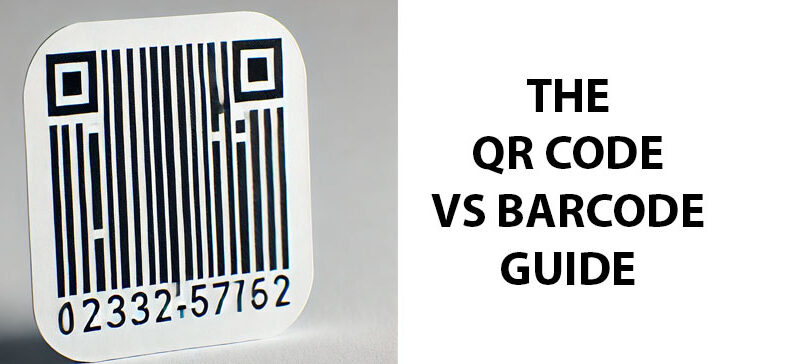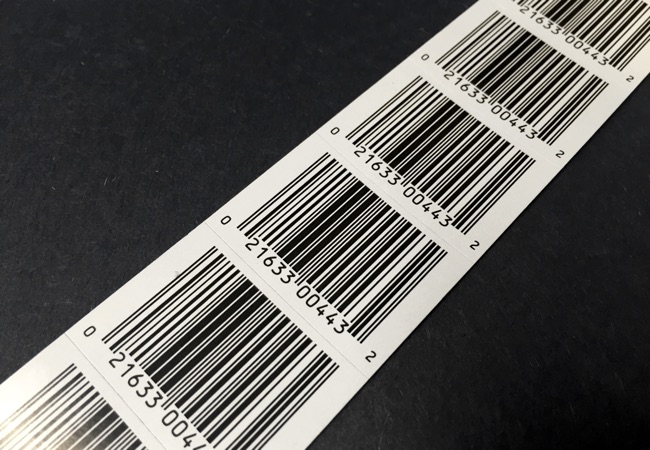Variable data labels can be highly useful for a variety of industries. Although address labels might be what comes to mind, variable data labels can do so much more than that. From branding and personalization to increased efficiency, variable data labels have a lot of uses that can benefit your business.
So what exactly are variable data labels? Read on to learn how variable data labels and variable data printing can improve your business processes.
What Are Variable Data Labels?
Variable data labels are labels printed in a single run with data that varies from label to label. This data might be a series of consecutive barcodes, QR codes, or serial numbers. The variable data can also be the different scents of a product or different flavors of a drink.
Variable data labels use a technology called variable data printing. Variable data printing is a form of digital printing technology. The process requires both a label template and a database or spreadsheet file. The printing software uses the data from the spreadsheet to customize certain elements of the label. This allows you to print labels for a variety of products in a single run, saving you time and money. All you need is the right software and a compatible printer. Alternatively, you can find a label printer, such as Coast Label, to print your variable data labels.
Best Uses for Variable Data Labels
Variable data labels can be useful in a number of industries, from logistics and shipping to manufacturing and more. Here are some of the best uses of variable data labels:
- Product labeling: One of the best uses of variable data labels is providing specific details about products, such as manufacturing data, batch number, and expiration date. This information is critical for product traceability, quality control, and regulatory compliance.
- Logistics and transportation: Variable data labels are critical to logistics companies as they transport shipments from location to location. By providing real-time updates of specific shipments, these companies manage supply chain operations, improve delivery times, and reduce shipping costs.
- Warehouse management: Used as part of your warehouse management strategy, variable data labels can make your processes more efficient. Variable data labels help pickers find the right goods by including row and shelf information. Variable data labels can also help process returns, sort goods, and manage inventory levels.
- Marketing and advertising: If you’re looking to stand out, variable data labels are one way to catch your customer’s attention. By personalizing marketing campaigns with names and locations, you can increase customer engagement rates, improve customer loyalty, as well as drive sales.
- Healthcare and pharmaceuticals: Variable data labels can be used to provide specific details about medications, such as dosage, frequency, and patient information. This information is critical not only for patient safety but also for compliance with federal regulations.
These are just some of the most common ways to use variable data labels. The best uses for your company will depend on your industry as well as your specific needs.
When Not to Use Variable Data Labels
Variable data labels are a great way to increase your efficiency and save time and money. However, there are certain cases when it’s better not to use variable data labels. Here are some examples of when not to use variable data labels.
- Static data: If the data on the label doesn’t change frequently or at all, you probably don’t need variable data labels.
- Sensitive data: Variable data labels shouldn’t be used to display sensitive information, such as financial data or personal health information.
- Limited data sets: When only a limited set of data is represented (such as yes/no), variable data labels might not be very useful. A static label would be a better fit.
- Compatibility issues: In order to print variable data labels, you need the right software and printer. If your system doesn’t support variable data labels, trying to print them could cause technical issues.
- Cost-effectiveness: In some cases, the cost of producing variable data labels may outweigh the benefits. For example, if the data is simple and doesn’t need to be updated very often, it may cost you less to use static labels instead.
The Benefits of Variable Data Labels
Variable data labels are used in many different ways because they are such a powerful tool. Here are just some of the benefits of using variable data labels:
- Flexibility: Because you can change the data printed, variable data labels are much more flexible than static labels. This allows you to quickly update and modify labels as needed.
- Personalization: Variable data labels let you easily personalize information for individual customers.
- Accuracy: Because variable data labels can be linked to underlying data, they can help provide more accurate information. This reduces errors and improves the integrity of data.
- Efficiency: One of the benefits of variable data labels is how efficiently they can be printed. You don’t have to stop your printing run just to change a small component of the label. Variable data labels can be automated, reducing the need for manual data entry, which in turn saves you time and money.
- Compliance: Using variable data labels to provide specific details about products and shipments helps you comply with regulatory requirements. This is especially helpful if you’re in healthcare, manufacturing, or transportation.
How Variable Data Labels Benefit Brands
Now that you know what variable data labels are, let’s talk about how they can benefit your brand. Variable data labels allow for a lot of creativity and flexibility, which can improve branding and marketing efforts.
Although some of the most common uses of variable data labels are in shipping, brands can use variable data printing in a variety of creative ways. Here are some of the ways variable data labels benefit brands:
- Personalization: Personalization is a great way to engage your customers and create memorable packaging and marketing materials. Using variable data labels, brands can add a touch of personalization that’s sure to improve customer loyalty.
- Product differentiation: One way to stand out from competitors is to use variable data labels. Coca-Cola’s “Share a Coke” campaign did this quite successfully by printing 800 million labels with around 10,000 different names. While the campaign was active, customers would go out of their way to buy cans with their own name or the names of friends and family. Other companies have used similar strategies in their own marketing by printing different artwork and slogans on their products. Limited edition packaging is another way variable data labels have been used successfully to differentiate products.
- Target specific segments of your audience: Another fun way to use variable data labels is to target a specific demographic. For example, you might tweak your labels by region to take advantage of regional pride.
- Run promotions: Another way brands can use variable data labels is to run promotions. For example, variable data labels printed with coupon codes can be an effective way to sell a lot of products quickly.
How Variable Data Labels Help with Traceability
Traceability is the ability to trace products all the way through the supply chain. This helps protect customers in case of faulty or contaminated products that need to be recalled. Traceability is required for some products and industries, such as food and medicine, and variable data labels are one way to comply with regulations.
Variable data labels are used to print information such as the serial number, batch number, expiration date, and so on. This information can then be used to precisely determine which products need to be recalled. The cause of the contamination can also be traced back to the appropriate manufacturing plant more easily.
In the case of pharmaceuticals, variable data labels can be used to keep counterfeit drugs off the market. Pharmacists often scan the serial number of drugs to ensure their authenticity before dispensing them to patients.
How to Print Variable Data Labels
Printing variable data labels requires careful attention to detail to make sure the data is accurate. Before you begin, you’ll need to make sure you have the appropriate software for variable data printing. Here are the general steps for printing variable data labels:
- Set up your database or spreadsheet. Make sure to organize the data in columns. For example, one column might be for batch number while another is for product weight.
- Design the label template. Make sure the template you design is compatible with the software you’re using as well as your printer. Use text placeholders in the variable data fields.
- Connect the template to your database or spreadsheet. Different software will have a slightly different process, but look for an option to import data. The printing software will pull the data from the database and populate the fields where the variable data will be printed.
- Preview and test before printing. This will help you catch any errors or formatting issues.
- Print the labels. Make sure you’re using appropriate label stock with the right size and orientation.
If you’d rather let the experts print your variable data labels, Coast Label is here to help. We can print serialized barcodes, consecutive numbers, multiple SKUS, and many more types of variable data labels for your business. Contact Coast Label today to get started!



